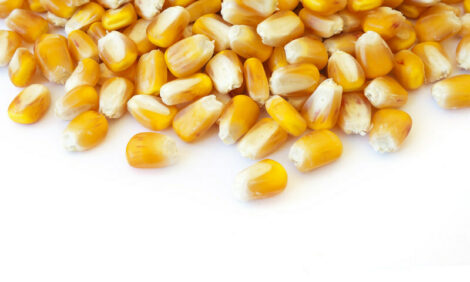



2008 Pig Cost of Production in Selected Countries
The European pig sector returned to profitability in 2008, according to Tony Fowler of BPEX.Introduction
This is the eighth in a series of annual reports that examines the relative costs of pig meat production up to farmgate level in selected countries. The latest results in this report relate to 2008.
2008 marked the return to profitability of the European pig sector. In the first quarter of the year, significant losses were being recorded in most of the InterPIG countries. However, weakening feed prices during the course of the year meant that production costs were significantly lower at the end of the year than at the start. The British pig industry also benefited from a substantial fall in the sterling exchange rate, which had two positive effects: it led to an improvement in the relative competitiveness of Great Britain pig production and it boosted pig prices through its impact on import and export levels.
Further improvements in technical efficiency have helped to trim production costs. One positive factor in 2008 was the success of the BPEX programme to distribute the PCV2 vaccine, which is used to control PMWS, to English pig producers. In the first two months of the scheme, applications representing 250,000 sows – 70 per cent of the English breeding herd – had been received. Sow productivity, post-weaning, mortality and growth rates improved in 2008 and this is likely to have been due in no small part to PCV2. Further gains are being seen in 2009. However, although British pig meat production is making some impressive performance gains, it is still lagging behind the European average in some areas, in particular, pigs born/sow.
2009 has seen a further weakening in sterling, which together with declines in production, has pushed pig prices to record levels. At the same time, feed prices have continued to move lower. Consequently, profit margins this autumn have been the highest for over ten years. However, this is not a reason for complacency. The pig industry does not control world feed prices. The exchange rate is unpredictable and could move the other way, with negative implications for prices.
The one thing that is within the power of the pig sector is to take action to reduce production costs. A knowledge of the costs of production is the first step to reducing them, and will help producers cope with potential fluctuations in market prices and input costs.
Key Points
- The cost of pig meat production in Great Britain production increased by 12 per cent in 2008, to 136.8p/kg. The average cost of production in the EU was 135.9p/kg dw, up 24 per cent. Production costs in Great Britain were, therefore, much closer to the EU average than in previous years, when we had been one of the highest-cost countries.
- The improvement in the relative cost of production in Great Britain was in part due to improved physical performance, but it was mainly due to the lower exchange rate.
- The major cause of the increased production costs in the first half of the year was high feed prices. However, feed costs trended lower during the course of 2008, which means that end-year costs of production in most countries are likely to have been lower than the annual averages.
- The cash costs of production, ie excluding finance costs, were120.0p/kg in 2008. This was about 15p higher than in 2007 and 30p higher than in 2006. The UK cash costs of production were 5p higher than the EU average, significantly less than the differential seen in previous years.
- In 2008 as a whole, EU feed costs increased by 34 per cent compared with a year earlier in sterling terms although they were just 18 per cent higher in Euro terms. The cost increase (in sterling) was 25 per cent in Great Britain.
- The overall average number of pigs weaned per sow per year in the European InterPIG countries showed a three per cent increase in 2008, up from 23.24 in 2007 to 23.93. There was a further two per cent increase in pigs weaned per sow in Great Britain, to 22.09. This was only slightly below the record level of 2000. However, performance results for Great Britain remain near the bottom of the European league.
- Great Britain continued to show improvements in post-weaning mortality, down from 7.0 per cent to 5.6 per cent. By far the most marked improvement in post-weaning mortality in recent years has occurred in Great Britain Between 2004, when the mortality rate peaked, and 2008 mortality declined by 51 per cent in Great Britain compared with nine per cent in the EU as a whole.
- The average number of pigs finished per sow in Great Britain increased for the fifth consecutive year in 2008. At 20.9 pigs per sow, average performance was 0.7 pigs (four per cent) higher than in 2007 and 2.0 pigs (11 per cent) higher than in 2004. This was the highest annual improvement recorded for at least 15 years.
- The most marked improvement in daily liveweight gain for feeding herds occurred in Great Britain, up 11 per cent to a record 757g. Great Britain results have increased every year since 2003, when they averaged 627g per day, and they are now up to the EU average.
- Great Britain produces lighter pigs than most other countries in Europe and this, together with the below-average number of pigs finished per sow, means that the amount of carcass meat produced per sow is the lowest of all the EU countries. However, production in Great Britain has been increas ing faster than the EU average, up from 75 per cent of the EU average in 2004 to 80 per cent in 2008.
- Feed prices have continued to fall in 2009. In Euro terms, EU feed prices in August were on average 19 per cent lower than in the 2008 year, but due to the depreciation of sterling, they were just 11 per cent lower in sterling terms. Compound feed prices in Great Britain have risen relative to other countries; in August 2009, they averaged four per cent less than a year earlier in sterling terms.
- In 2009, there has been a further decline in sterling but the impact of this has been offset by the increase in British feed prices, leaving competitiveness little changed. Costs of production in Great Britain averaged 101 per cent of the EU average in 2008 while in August 2009 they were 100 per cent of the EU average.
- During the first five months of 2008, British pig producers were losing on average between £20 and £25 per pig. By August 2009, the average net profit is estimated to have risen to £17 per pig.
| Table 1. Average costs of production, 2004-2008 (p/kg dw) | ||||||
| Year | 2004 | 2005 | 2006 | 2007 | 2008 | 2008/07 % change |
|---|---|---|---|---|---|---|
| Austria | 111.6 | 103.5 | 107.6 | 113.5 | 136.8 | +20 |
| Belgium | 92.0 | 86.8 | 90.8 | 105.6 | 130.0 | +23 |
| Denmark | 92.4 | 88.3 | 87.3 | 95.9 | 129.1 | +35 |
| France | 94.5 | 90.6 | 92.0 | 103.2 | 130.5 | +26 |
| Germany | 105.6 | 99.1 | 99.4 | 109.3 | 139.2 | +27 |
| Great Britain | 110.2 | 104.4 | 108.6 | 121.7 | 136.8 | +12 |
| Ireland | 96.9 | 94.6 | 99.9 | 109.1 | 135.2 | +24 |
| Italy | 121.8 | 117.0 | 114.2 | 125.7 | 150.5 | +20 |
| Netherlands | 90.3 | 84.4 | 86.1 | 100.0 | 128.6 | +29 |
| Spain | na | na | 96.5 | 107.5 | 132.1 | +23 |
| Sweden | 100.3 | 96.3 | 102.3 | 115.9 | 145.9 | +26 |
| EU | 101.5 | 96.5 | 98.6 | 109.8 | 135.9 | +24 |
Further Reading
| - | You can view the full report by clicking here. |
June 2011








